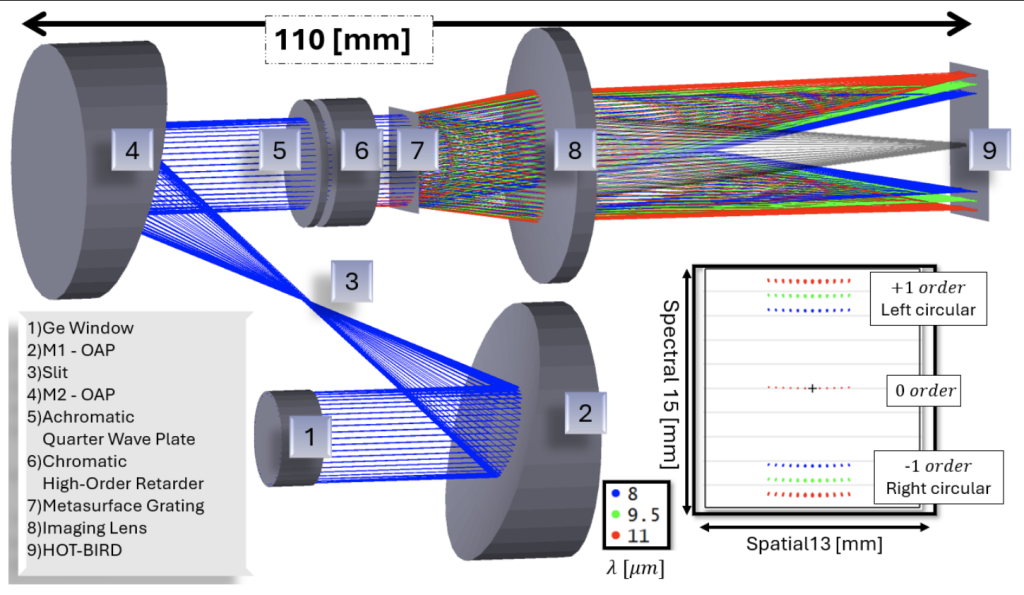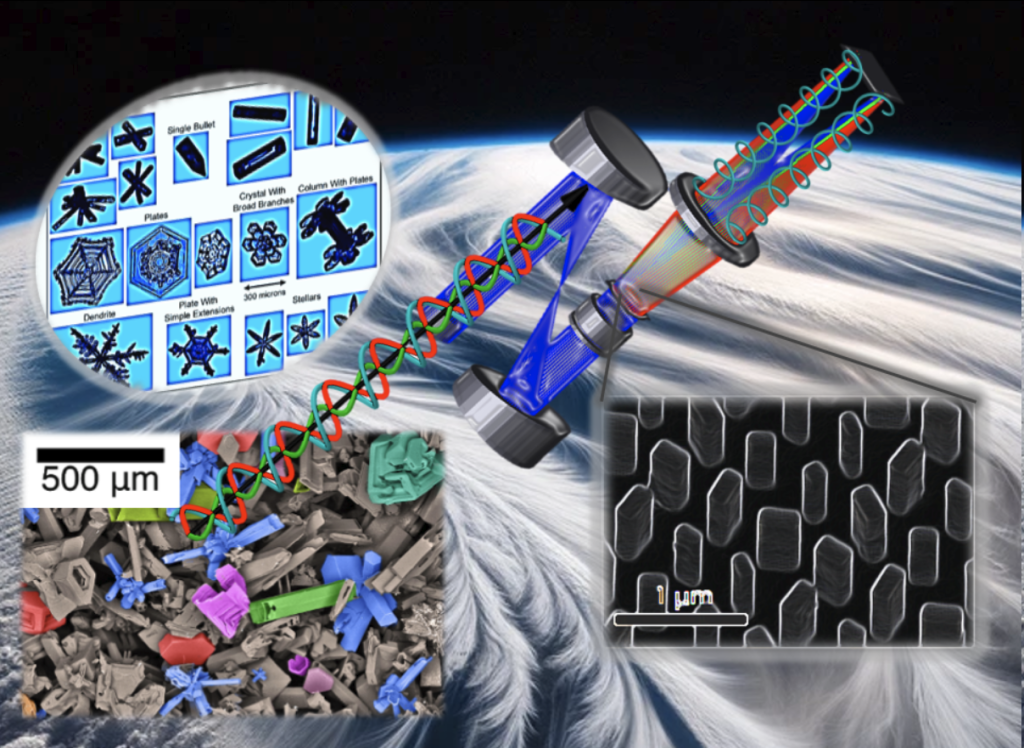CHanneled Infrared Polarimeter (CHIRP)
PHD Student: Ellie Spitzer
Awarded under the Instrument Incubator Program (IIP)
NASA Earth Science Technology Office Grant 80NSSC25K7306
Clouds remain a major source of uncertainty in climate models; ice cloud properties are especially poorly constrained. Existing satellite retrievals of cloud ice involve significant microphysical and optical assumptions. In particular, ice water path (IWP) has been used as a tuning parameter in climate models to balance the top-of-atmosphere radiation budget. A lack of accurate ice cloud data in climate models generates uncertainty in projected warming, circulation, and precipitation shifts for coming decades. NASA’s Earth Science Focus Areas in Atmospheric Composition and Climate Variability solicit a better understanding of processes related to the dynamics and microphysical properties of aerosols and clouds under climate change. Additional polarimetric information from ice cloud scattering in long-wave thermal infrared (LWIR) is particularly useful for understanding ice cloud lifetime, microphysical evolution, and interaction with aerosols.


Next-generation remote sensing missions include visible polarimeters, e.g., SPEXone and HARP-2 on NASA’s PACE mission, 3MI on Europe’s Metop-SG, and MAIA on PLATiNO-2. Moreover, the past two National Academies of the Sciences Decadal Surveys for Earth Science in 2007 and 2017 identified polarimetry as a crucial observable for aerosol and cloud remote sensing. Polarimetry is thus a priority for the NASA Radiation Sciences program and Earth Science remote sensing more generally. In IIP-23, we propose to develop an instrument for spectrally-resolved LWIR polarimetry to study ice clouds and their microphysical properties. This project proposes the development of the CHanneled Infrared Polarimeter (CHIRP) based on metasurface polarization grating technology and sensitive LWIR type-II superlattice (T2SL) HOT-BIRD detectors. CHIRP’s specifications are linear Stokes measurements with 1K uncertainty for 200K targets within a 1 micron spectral window. In IIP-16, the PI and co-I of this proposal used commercially-available detector and polarization analysis technologies to develop the InfraRed Channeled Spectro-Polarimeter (IRCSP). This proposed CHIRP development is motivated by IRCSP’s high-altitude balloon observations of thermal polarization. For thermal polarimetry to be scientifically relevant, measurement precision must be maintained even for the coldest ice clouds in Earth’s atmosphere. CHIRP’s radiometric and polarimetric measurements from the proposed IR wavebands (8.0 – 11.5 micron) provide the needed sensitivity over a full dynamic range of cloud ice temperatures. The compactness of our CHIRP design enables cost effective deployment of these radiometer-polarimeters on future large space-flight missions, or on small, distributed flight systems. In IIP-23, we will build a prototype instrument and complete laboratory characterization. We will conduct validation studies with cryostage-generated single- and multi-crystal samples to inform future bulk cloud measurements of CHIRP. Our team includes expertise in design and fabrication of polarization gratings at University of California San Diego, advanced infrared detectors at Jet Propulsion Laboratory (JPL), cloud microphysics and radiative transfer at NASA GSFC and the University of Arizona (UArizona), and polarimetric design and testing at UArizona. The entry level for the proposed instrument is TRL = 2 (associated with the polarization grating), and it will reach TRL = 4 within the three-year period of performance.

